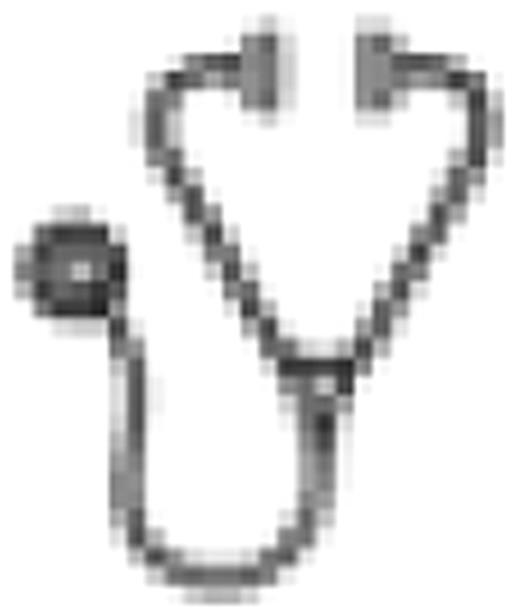Abstract
Abstract 2059
Iron dextran injections are often used to induce iron overload in rodents, for the purposes of assessing iron chelation therapy. In gerbils, we have previously described that deferasirox therapy preferentially clears hepatocellular iron when compared with reticuloendothelial stores. Ascorbate deficiency, which is common in humans with iron overload, produces similar profound disparities between reticuloendothelial and parenchymal iron stores. We postulated that iron-induced ascorbate deficiency might be exaggerating reticuloendothelial iron retention in gerbils receiving deferasirox therapy. This study examined the effect of supplemental ascorbate on spontaneous iron loss and deferasirox chelation efficiency in the iron-dextran loaded gerbil.
48 female gerbils underwent iron dextran loading at 200 mg/kg/week for 10 weeks. Sixteen animals were sacrificed at 11 weeks to characterize iron loading; eight were on standard rodent chow and eight had chow supplemented with 2250 ppm of ascorbate. 32 additional animals that were not ascorbate supplemented during iron loading transitioned into the chelation phase. Half were subsequently placed on ascorbate supplemented chow and both groups were assigned to receive either deferasirox 100 mg/kg/day five days per week or sham chelation. Animals received iron chelation for twelve weeks. Liver histology was assessed using H & E and Prussian blue stains. Iron loading was ranked and graded on a five-point scale by an experienced pathologist screened to the treatment arm. Iron quantitation in liver and heart was performed by atomic absorption.
Table 1 one summarizes the findings. During iron dextran loading, ascorbate supplementation lowered wet weight liver iron concentration but not liver iron content suggesting primarily changes in tissue water content. Spontaneous iron losses were insignificant, regardless of ascorbate therapy. Deferasirox lowered liver iron content 56% (4.7% per week) in animals without ascorbate supplementation and 48.3% (4.0% per week) with ascorbate supplementation (p=NS).
Cardiac iron loading, unloading and redistribution were completely unaffected by ascorbate supplementation. Spontaneous iron redistribution was large (1.9% – 2.3% per week). Deferasirox chelation did not lower cardiac iron to a greater degree than spontaneous cardiac iron redistribution.
Histologic grading paralleled tissue wet weight iron concentrations. Ascorbate treatment lowered the rank and absolute iron score in liver during iron loading (p=0.003) and there was a trend toward lower iron scoring in sham treated animals (p=0.13). Ascorbate had no effect on histological score or relative compartment distributions of iron in deferasirox chelated animals (p=0.5).
Ascorbate supplementation was sufficient to increase total plasma ascorbate levels from 25 ± 12.2 uM to 38.4 ± 11 uM at 10 weeks (p=0.03). In the liver, ascorbate increased from 1203 ± 212 nmol/g of tissue to 1515 ± 194 nmol/g of tissue (p=0.01) with supplementation. No significant change in total ascorbate was observed in the heart.
We hypothesized that ascorbate supplementation might improve reticuloendothelial iron accessibility to deferasirox by facilitating redox cycling. Although gerbils synthesize their own ascorbate, supplementation was able to raise both serum and hepatic total ascorbate levels. However, increasing ascorbate did not change either the amount or distribution of tissue iron in deferasirox-treated animals.
| # . | Treatments . | Liver . | Heart . | |||||
|---|---|---|---|---|---|---|---|---|
| Chelation . | C . | [Fe] wet (mg/g) . | Weight (gram) . | Content (mg) . | [Fe] wet (ug/g) . | Weight (gram) . | Content (ug) . | |
| 1 | None | No | 9.86±0.83 | 4.10±0.65 | 38.2±5.6 | 847±112 | 0.323±0.065 | 267±112 |
| 2 | Sham | No | 9.20±1.50 | 4.40±0.57 | 39.7±4.7 | 654±94 | 0.334±0.030 | 217+94 |
| 3 | DFX | No | 4.61±0.71* | 3.79±0.18* | 17.5±3.1* | 676±73 | 0.311±0.034 | 210±73 |
| 4 | None | Yes | 8.69±0.64 | 4.22±0.40 | 35.9±3.1 | 881±135 | 0.030±0.023 | 267±134 |
| 5 | Sham | Yes | 8.50±8.50 | 4.57±0.65 | 38.7±6.6 | 637±110 | 0.353±0.053 | 229±110 |
| 6 | DFX | Yes | 5.75±0.84* | 3.51±0.60* | 20.0±3.3* | 676±112 | 0.317±0.018* | 213±112 |
| # . | Treatments . | Liver . | Heart . | |||||
|---|---|---|---|---|---|---|---|---|
| Chelation . | C . | [Fe] wet (mg/g) . | Weight (gram) . | Content (mg) . | [Fe] wet (ug/g) . | Weight (gram) . | Content (ug) . | |
| 1 | None | No | 9.86±0.83 | 4.10±0.65 | 38.2±5.6 | 847±112 | 0.323±0.065 | 267±112 |
| 2 | Sham | No | 9.20±1.50 | 4.40±0.57 | 39.7±4.7 | 654±94 | 0.334±0.030 | 217+94 |
| 3 | DFX | No | 4.61±0.71* | 3.79±0.18* | 17.5±3.1* | 676±73 | 0.311±0.034 | 210±73 |
| 4 | None | Yes | 8.69±0.64 | 4.22±0.40 | 35.9±3.1 | 881±135 | 0.030±0.023 | 267±134 |
| 5 | Sham | Yes | 8.50±8.50 | 4.57±0.65 | 38.7±6.6 | 637±110 | 0.353±0.053 | 229±110 |
| 6 | DFX | Yes | 5.75±0.84* | 3.51±0.60* | 20.0±3.3* | 676±112 | 0.317±0.018* | 213±112 |
Bold= p<0.05 with respect to matched group without vitamin C treatment
Asterisk = p < 0.05 with respect to sham-chelated animals
Nick:Novartis: Employment. Wood:Novartis: Research Funding; Ferrokin Biosciences: Consultancy.

This icon denotes an abstract that is clinically relevant.
Author notes
Asterisk with author names denotes non-ASH members.

This feature is available to Subscribers Only
Sign In or Create an Account Close Modal